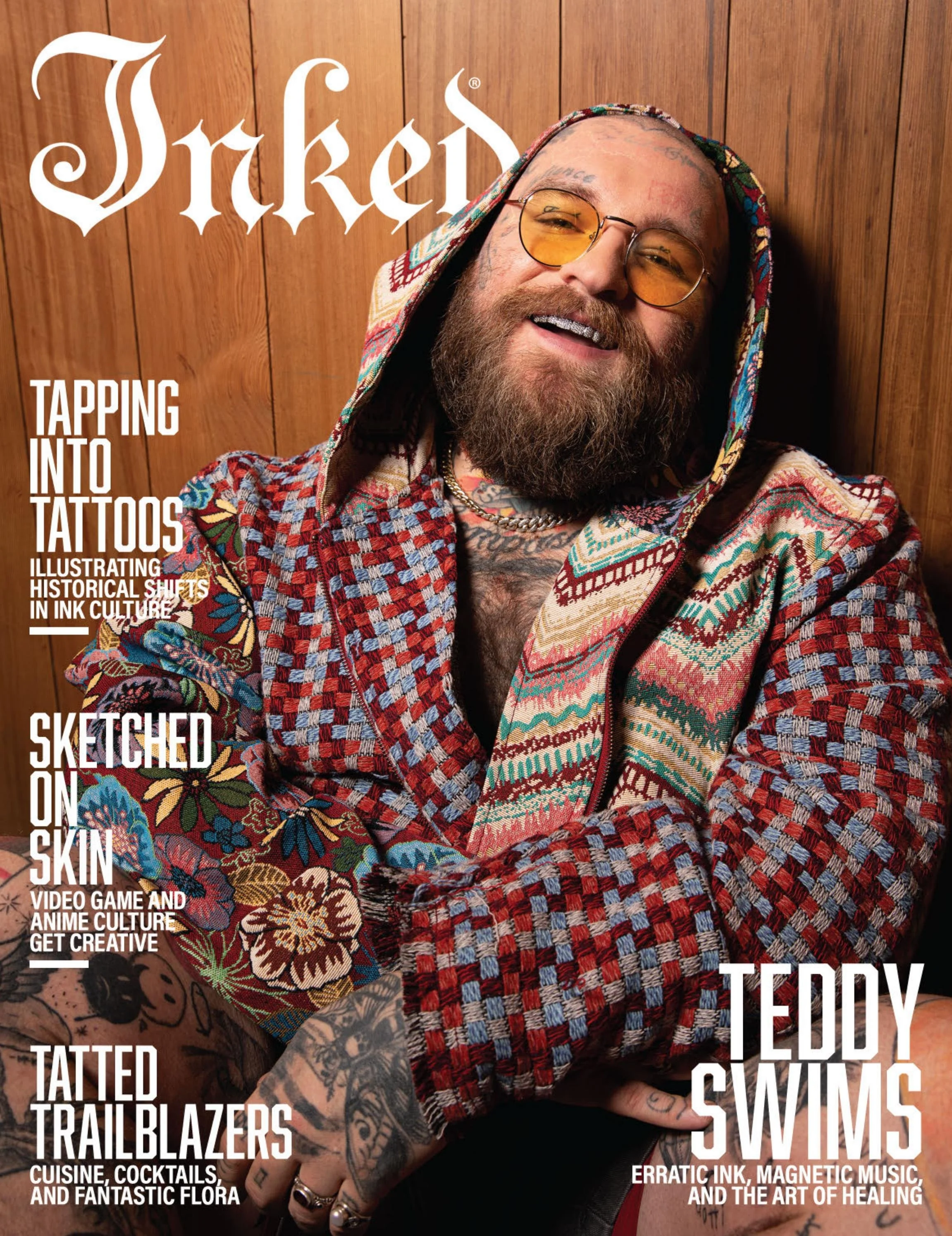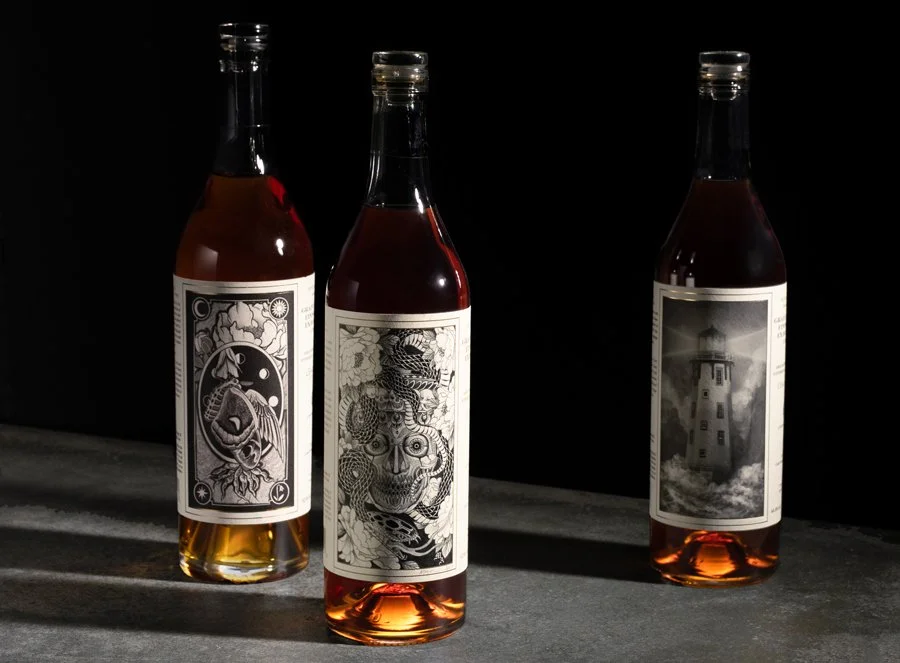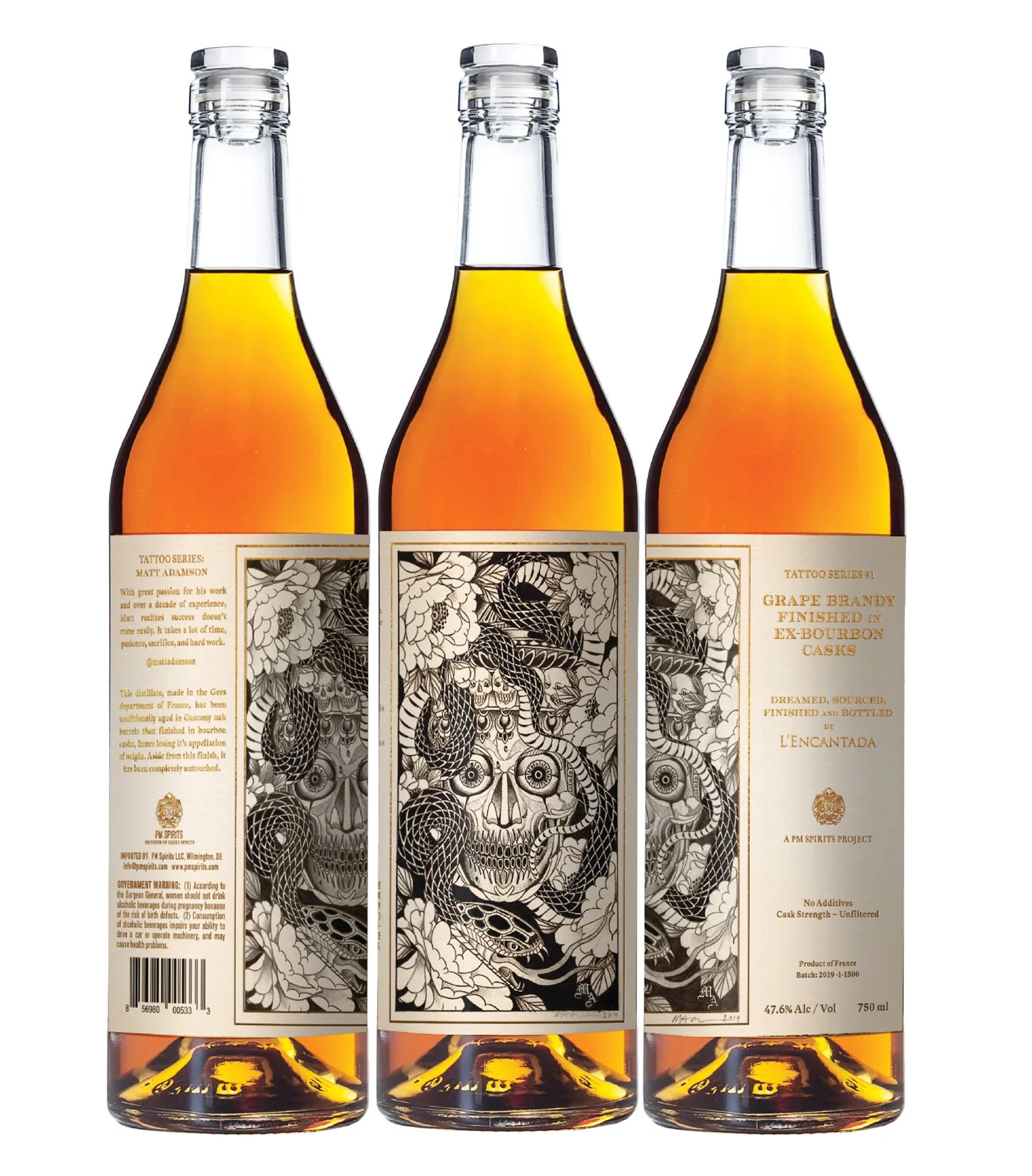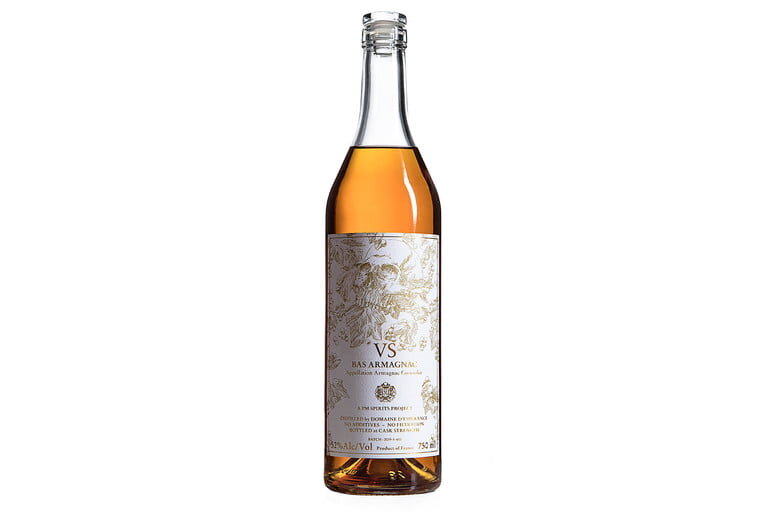BY JOEY SKLADANY
It may be stereotypical to assume that a bartender in a dive bar will serve you a drink with an ink-adorned forearm, but the parallels between tattoos and alcohol have been drawn far generations, from drunken pirates to beer-slinging bikers. After all, the rebellious nature of knocking back libations and rocking permanent body art often go hand in hand. And for some spirit companies, tattoos are now a major component of the brand ethos.
In an oversaturated beverage industry where everything has been seemingly done before, there are a handful of businesses that have gone above and beyond, both past and present, to challenge marketing norms and redefine the connection they have with consumers, especially those who value the creativity and authenticity that transcend the liquor itself.
These are the three that continue to lead the pack, one sip and tattoo at a time.
Labels that Inspire
France-based L'Encantada Armagnac brandy took tattoo appreciation in a unique direction by commissioning artists to replicate their intricate sketches in label form.
Nicolas Palazzi, owner of PM Spirits and L'Encantada's U.S. importer, championed the idea and partnership after getting his first tattoo, which memorialized his daughter Jane's health struggles with epilepsy. This evolved into other symbolic designs and subsequent ink sessions, which then inspired the entrepreneur to extend this art form to the bottle through an annual tattoo series that features up-and-coming talent.
"Tattoos are very important to me. They are also, in my mind, a very 'American' thing. Here, it felt like we were bridging both cultures: making old-school French spirits cooler by bringing it some American flavor," Palazzi says, adding, "From a packaging standpoint, I associated the American flavor with tattoos."
This artistic endeavor has resulted in collaborations with the renowned Matt Adamson, who completed Palazzi's first tattoo, as well as Laura Leonello, who concocted a "Beacon of Hope" label in 2021 to capture life after the peak of COVlD-19.
https://issuu.com/inkedmag/docs/inked_magazine_issue_3_2025/24






